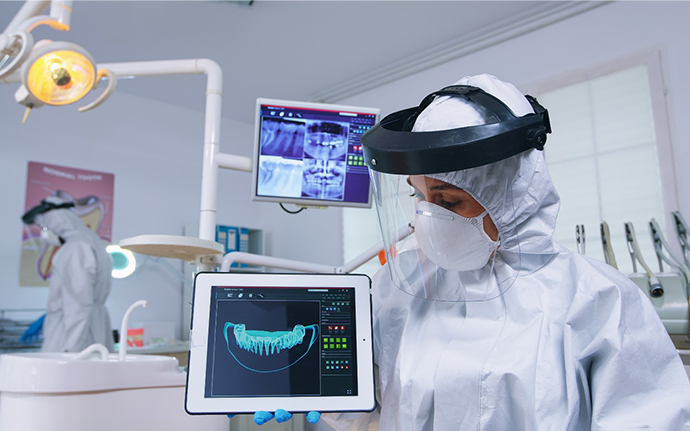Dental technologies have made remarkable progress in recent years, with the advent of advanced tools and techniques that have revolutionized the dental industry. From digital scanning to 3D printing, these technologies transform how dental professionals provide treatments and care to their patients. These innovations have made dental procedures more comfortable, accurate, and efficient than ever before,resulting in better oral health outcomes for patients. Matrix Dental is a leading dental implant clinic in New Delhi, India. The clinic offers a wide range of dental services, including dental implants, orthodontics, cosmetic dentistry, and general dental care. In this blog, we will explore some of the latest dental technologies that are making waves in the industry and how they change how we approach dental care:-
● Digital Scanning and Impression Systems
Gone are the days of using messy impression materials to take molds of patients’ teeth. Digital scanning and impression systems have made the process much simpler and faster. These systems use an intraoral scanner that captures a digital impression of the teeth and gums. The scanner creates a 3D model sent to a computer, allowing dentists to view and manipulate the image. This technology eliminates the need for physical impressions, making the process more comfortable for patients.
● 3D Printing
3D printing is another technology that is transforming the dental industry. With 3D printing, dentists can create custom-made dental appliances, such as crowns, bridges, and dentures. This technology allows for precise and accurate manufacturing, resulting in a better fit for patients. The process is also much faster than traditional methods, which can take several weeks to complete.
● Laser Dentistry
Laser dentistry is a minimally invasive technique that has become increasingly popular recently. Lasers are used to perform various dental procedures, including gum reshaping, cavity removal, and teeth whitening. Laser dentistry is less invasive than traditional methods, resulting in less pain and discomfort for patients. Laser procedures often require less downtime, allowing patients to resume their normal activities more quickly.
● Cone Beam Computed Tomography (CBCT)
CBCT is a type of digital imaging that provides a 3D view of the teeth, bones, and soft tissues of the mouth. This technology is especially useful for dental implants, allowing dentists to create a precise plan for the procedure. CBCT is also helpful in diagnosing complex dental problems, such as impacted teeth and jaw tumors. With CBCT, dentists can obtain detailed images that are impossible with traditional X-rays.
● Digital Smile Design (DSD)
Digital Smile Design is a software system that allows dentists to create a digital mockup of a patient’s smile. Using the patient’s facial features, the software creates a customized design that considers the patient’s unique anatomy and preferences. With DSD, patients can see what their new smile will look like before any work is done. This technology is especially useful for cosmetic dentistry, where patients may have specific aesthetic goals.
Conclusion
The latest dental technologies are making significant strides in improving the dental care and treatment options available to patients. With continued research and development in the field, we can expect to see even more advanced dental technologies. As these innovations become more widely available, patients can look forward to a future with even better oral health care.
